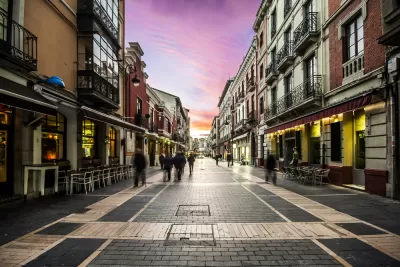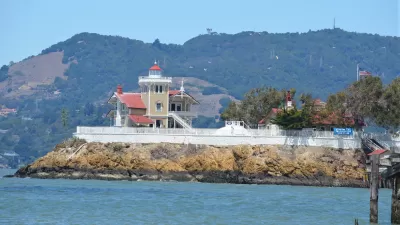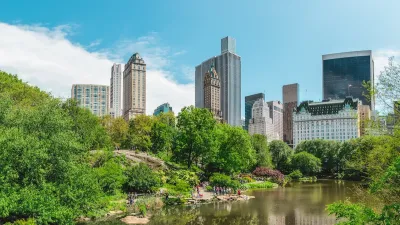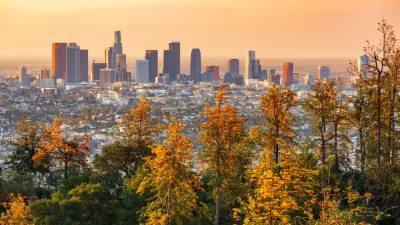Still battling a global pandemic and its widespread economic and social effects, cities nevertheless made progress in some unexpected ways.

Despite the challenges posed by the ongoing COVID-19 pandemic, writes Linda Poon, cities around the world managed to succeed in some innovative ways during 2021. Poon describes ten positive urban developments that led to "transformative — and in some cases unprecedented — changes toward improving residents’ health, safety and overall livability."
Some examples include:
- Glass panels that provide natural air flow and temperature regulation, such as those installed at Uber's Mission Bay headquarters. According to Poon, "the design addresses two of today’s most urgent crises: the pandemic and climate change" through better ventilation and reduced energy use for temperature control.
- The "one-minute city," a concept inspired by the "15-minute city." Rather than focusing on access to nearby amenities, this concept seeks to give residents control over the public realm just outside their homes.
- Affordable, accessible water vending machines installed in Nairobi, Kenya, where people living in informal settlements often lack access to clean water.
- A planned autonomous city in Japan. Toyota's Woven City, currently under construction at the base of Mount Fuji, will be a testing ground for autonomous transport and high-tech urban amenities.
- Criminal justice reforms. In the wake of high-profile police killings and calls for reform, cities have launched initiatives that divert calls about behavioral incidents to social workers in an effort to reduce the chances of fatal interactions with law enforcement.
Other promising programs mentioned in the article are universal basic mobility initiatives, Bogota's efforts to make childcare more accessible, and the trend of cities hiring "heat officers" as climate change leads to more extreme weather and more destructive wildfires.
FULL STORY: 10 Ways Cities Came Back in 2021

Study: Maui’s Plan to Convert Vacation Rentals to Long-Term Housing Could Cause Nearly $1 Billion Economic Loss
The plan would reduce visitor accommodation by 25,% resulting in 1,900 jobs lost.

North Texas Transit Leaders Tout Benefits of TOD for Growing Region
At a summit focused on transit-oriented development, policymakers discussed how North Texas’ expanded light rail system can serve as a tool for economic growth.

Why Should We Subsidize Public Transportation?
Many public transit agencies face financial stress due to rising costs, declining fare revenue, and declining subsidies. Transit advocates must provide a strong business case for increasing public transit funding.

How Community Science Connects People, Parks, and Biodiversity
Community science engages people of all backgrounds in documenting local biodiversity, strengthening connections to nature, and contributing to global efforts like the City Nature Challenge to build a more inclusive and resilient future.

Alabama: Trump Terminates Settlements for Black Communities Harmed By Raw Sewage
Trump deemed the landmark civil rights agreement “illegal DEI and environmental justice policy.”

Dear Tesla Driver: “It’s not You, It’s Him.”
Amidst a booming bumper sticker industry, one writer offers solace to those asking, “Does this car make me look fascist?”
Urban Design for Planners 1: Software Tools
This six-course series explores essential urban design concepts using open source software and equips planners with the tools they need to participate fully in the urban design process.
Planning for Universal Design
Learn the tools for implementing Universal Design in planning regulations.
City of Santa Clarita
Ascent Environmental
Institute for Housing and Urban Development Studies (IHS)
City of Grandview
Harvard GSD Executive Education
Toledo-Lucas County Plan Commissions
Salt Lake City
NYU Wagner Graduate School of Public Service





























